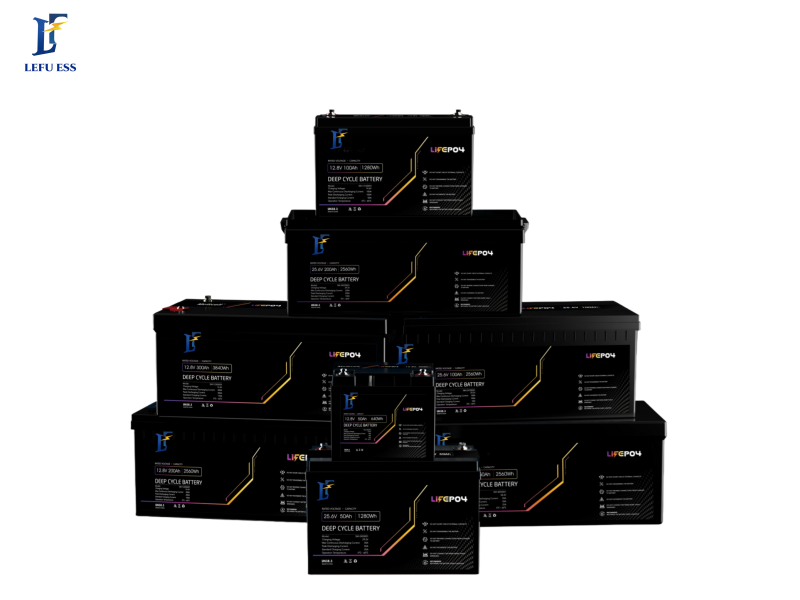Extend LiFePO4 Battery Lifespan: 5 Expert Tips
LiFePO4 Battery Lifespan Tips: LiFePO4 (Lithium Iron Phosphate) batteries are the gold standard for reliable, long-lasting energy storage. Known for their high cycle life and exceptional safety, they represent a significant investment—but only if you treat them right. By following simple operational guidelines, you can significantly extend your LiFePO4 battery’s lifespan, ensuring years of peak performance.
Here are five essential practices to maximize your LiFePO4 battery’s cycle life and protect your energy storage investment.

1. Avoid Deep Discharges (Target Shallow Cycles)
While LiFePO4 chemistry is highly resilient, routinely running your battery down to near 0% State of Charge (SOC) reduces its total cycle life. The shallower the cycle, the longer your battery lasts.
Pro Tip: Aim for shallow cycles. Consistently discharging your battery to only 20% SOC (or 80% Depth of Discharge) instead of 100% can significantly increase the number of total cycles the battery will provide over its lifetime. Always trust your Battery Management System (BMS) to handle the low-voltage cutoff, but recharge before hitting that limit.
2. Maintain an Optimal Temperature Range
Temperature is the single biggest factor influencing the long-term health of any lithium battery. Heat accelerates internal chemical degradation, and cold can cause permanent damage during charging.
Optimal Operation: LiFePO4 batteries are designed to perform best in moderate temperatures, typically 20°C to 25°C (68°F to 77°F). Operating outside the manufacturer’s specified range (especially in extreme heat) should be avoided.
Cold Weather Charging: Never charge a LiFePO4 battery when its temperature is below 0°C (32°F) unless it has a built-in low-temperature heating function. Charging in sub-freezing conditions causes irreversible damage to the cell structure (lithium plating).
3. Manage Charging Currents (Avoid High Amperage)
The rate at which you charge and discharge your battery directly impacts its internal stress and heat generation. High current rates accelerate degradation.
Use the Right Charger: Only use chargers specifically designed for LiFePO4 chemistry (a standard lead-acid charger will overcharge and destroy the battery). Ensure the charger’s voltage and current settings match your battery specifications.
Limit Continuous High Current: While your battery can handle high surge loads, keeping normal charging/discharging below the manufacturer’s recommended continuous rate (often below 0.5C or 1C) is crucial for achieving the maximum advertised cycle count.
4. Skip the Full Charge for Storage
While LiFePO4 batteries tolerate a 100% SOC better than other chemistries, keeping them at peak voltage for extended periods does contribute to long-term degradation.
Storage Longevity: For maximum battery lifespan during long-term storage (weeks or months), avoid leaving the battery at 100% charge. The ideal storage SOC is typically between 50% and 60% in a cool, dry place.
Daily Optimization: For daily cycling, some users choose to set their charging cut-off voltage slightly lower to achieve 90-95% SOC. This slight trade-off in capacity can add significant longevity to the battery’s service life.
5. Prevent Physical Damage
Although LiFePO4 cells are safer and more robust than other lithium chemistries, physical abuse or misuse can still compromise the internal components, particularly the crucial Battery Management System (BMS).
Handle with Care: Never drop the battery or expose it to crushing forces. Internal cell misalignment or damage to the BMS can lead to operational instability and reduced performance.
Inspect Connections: Regularly inspect terminals for loose connections or corrosion. Faulty connections generate excessive heat during use, which reduces efficiency and accelerates internal cell degradation.

Conclusion
Your LiFePO4 energy storage system is a robust asset designed for longevity. By being mindful of shallow cycling, staying within optimal temperature and current limits, and practicing careful handling, you can easily exceed the advertised cycle life and ensure your power solution remains dependable for years to come.

